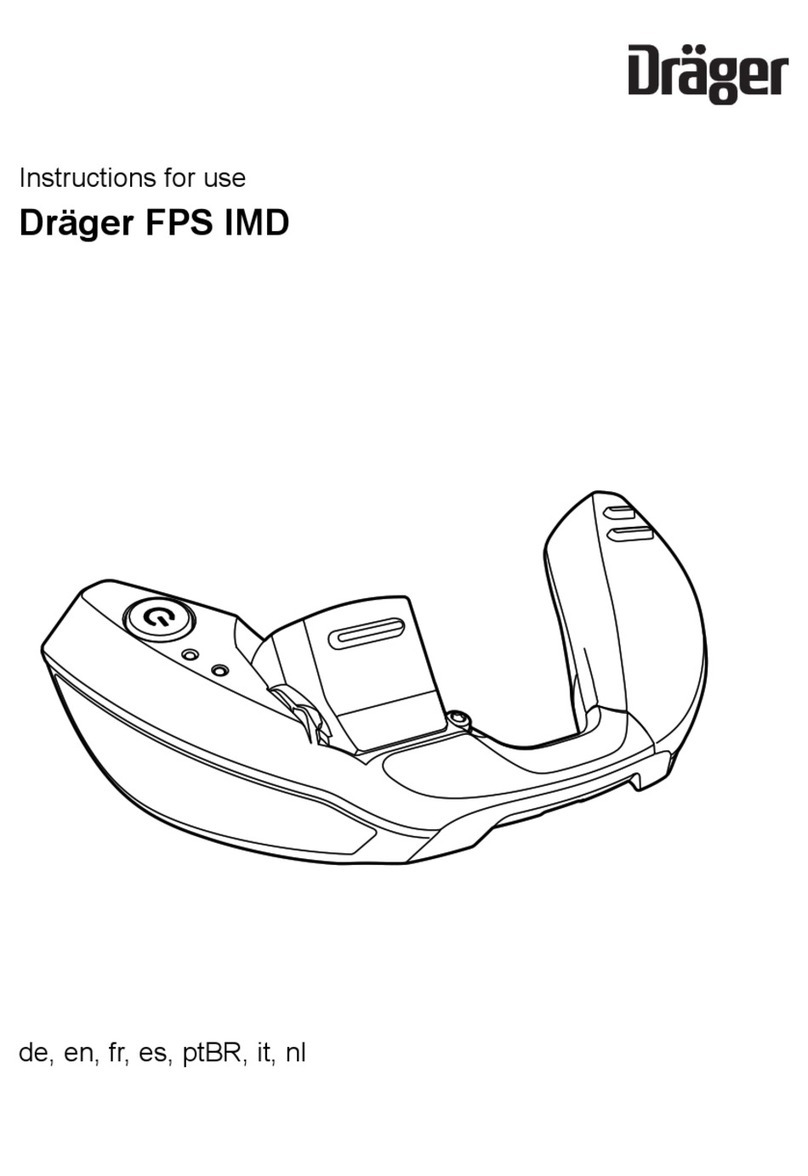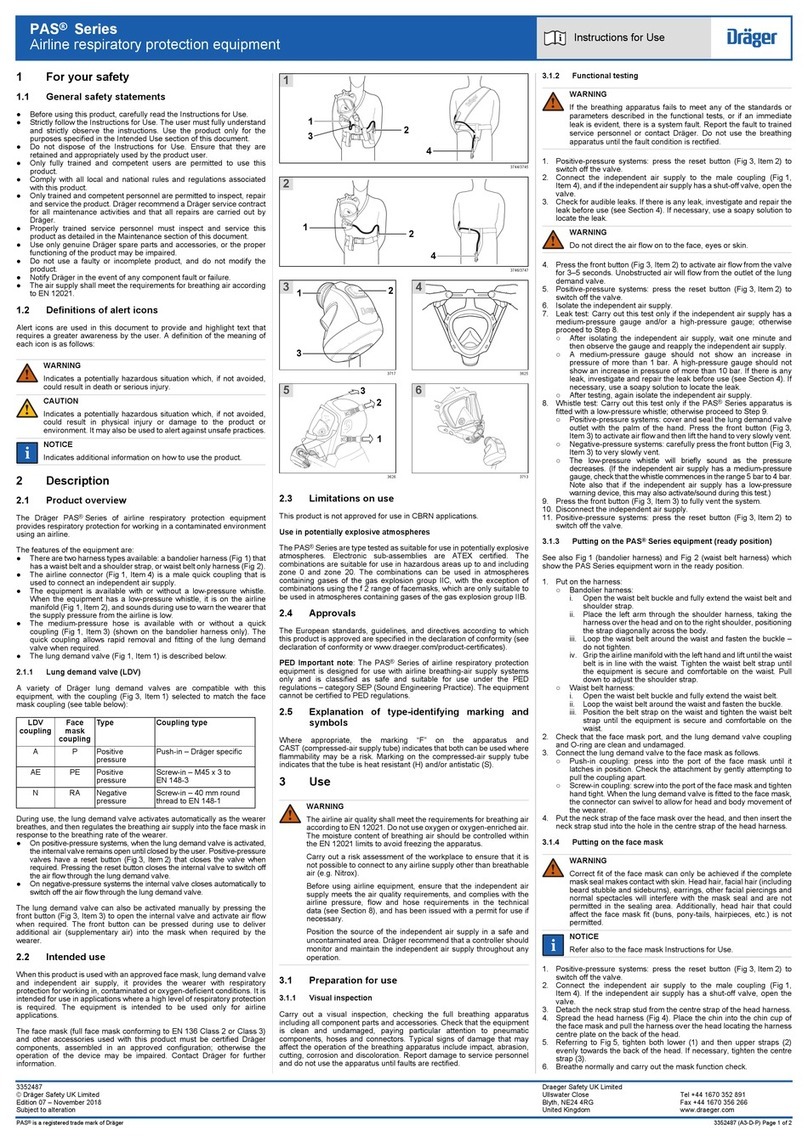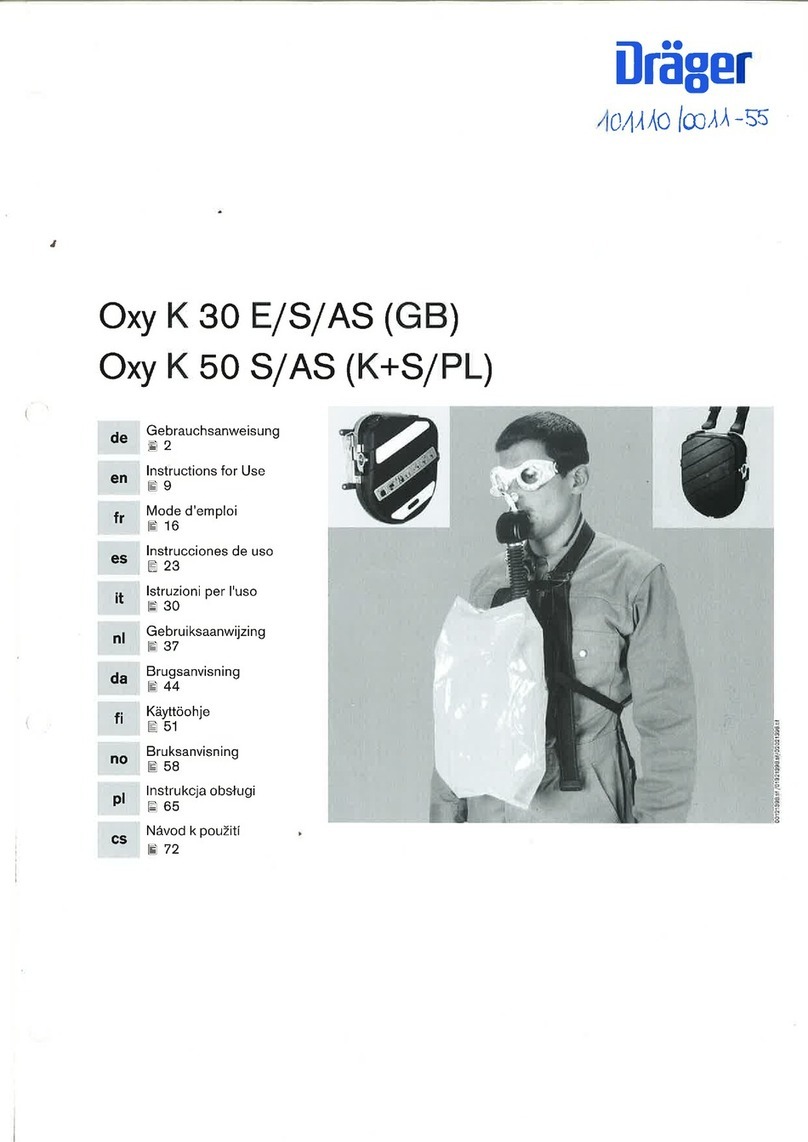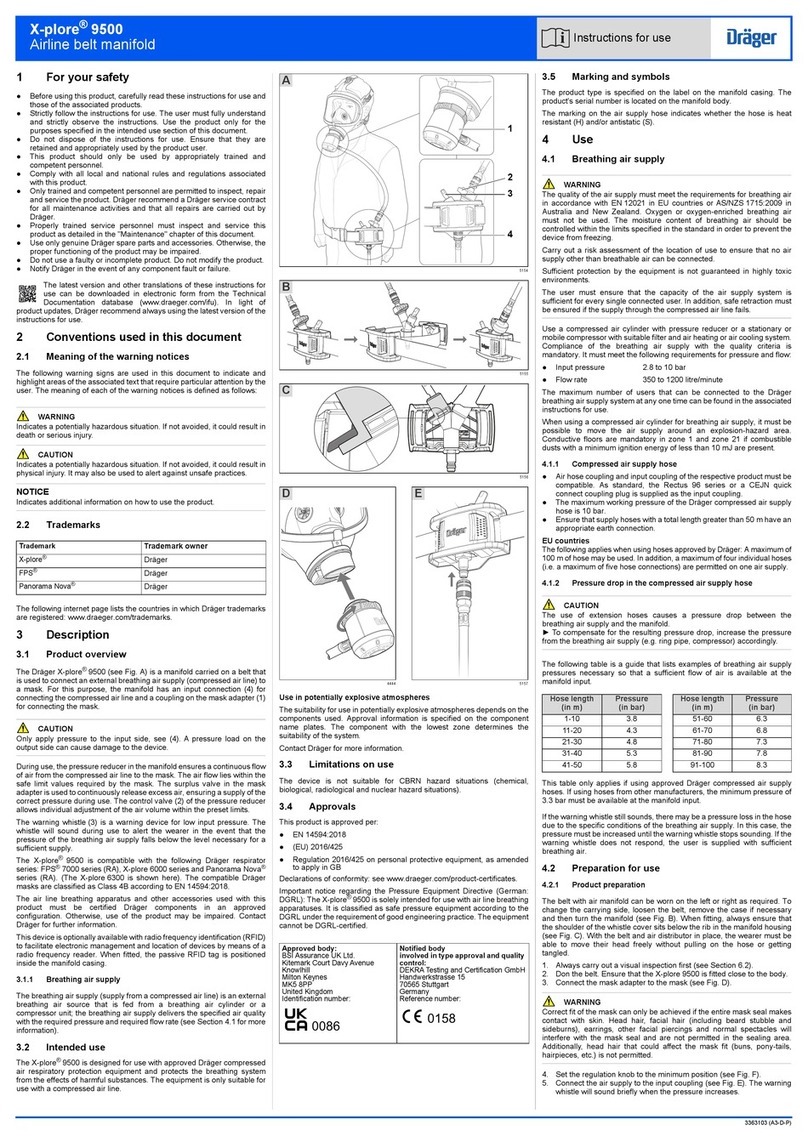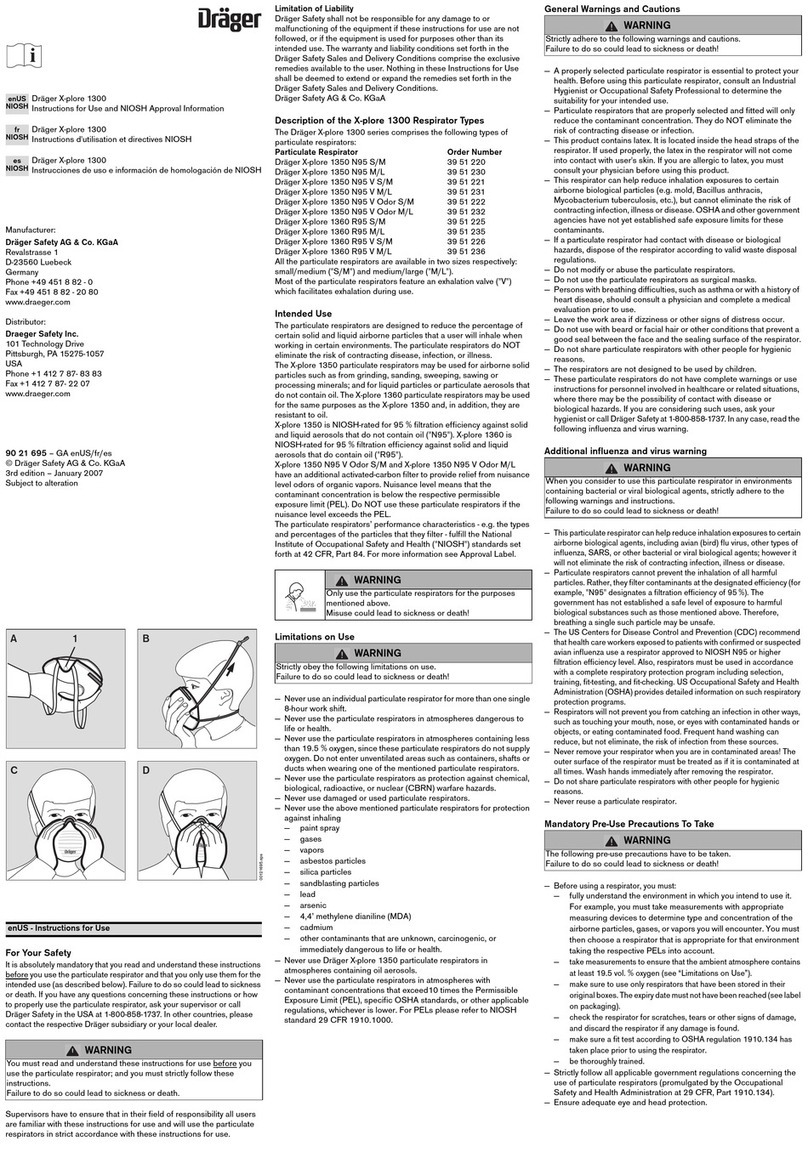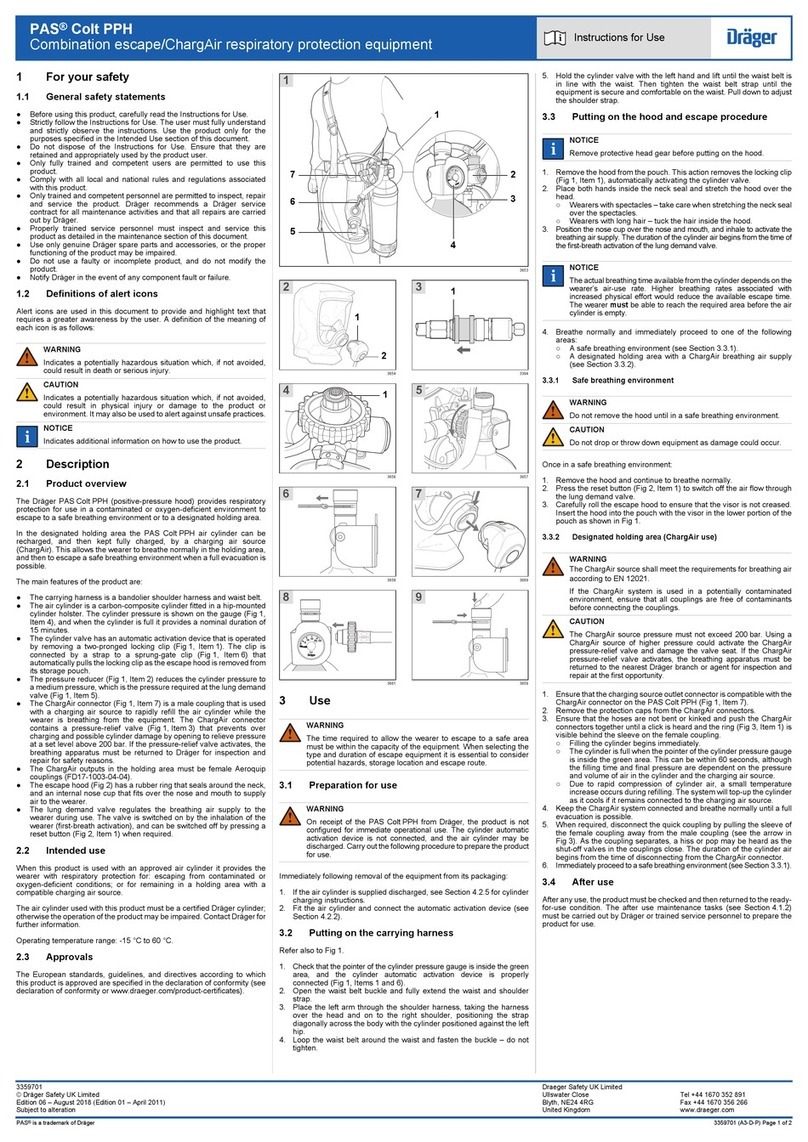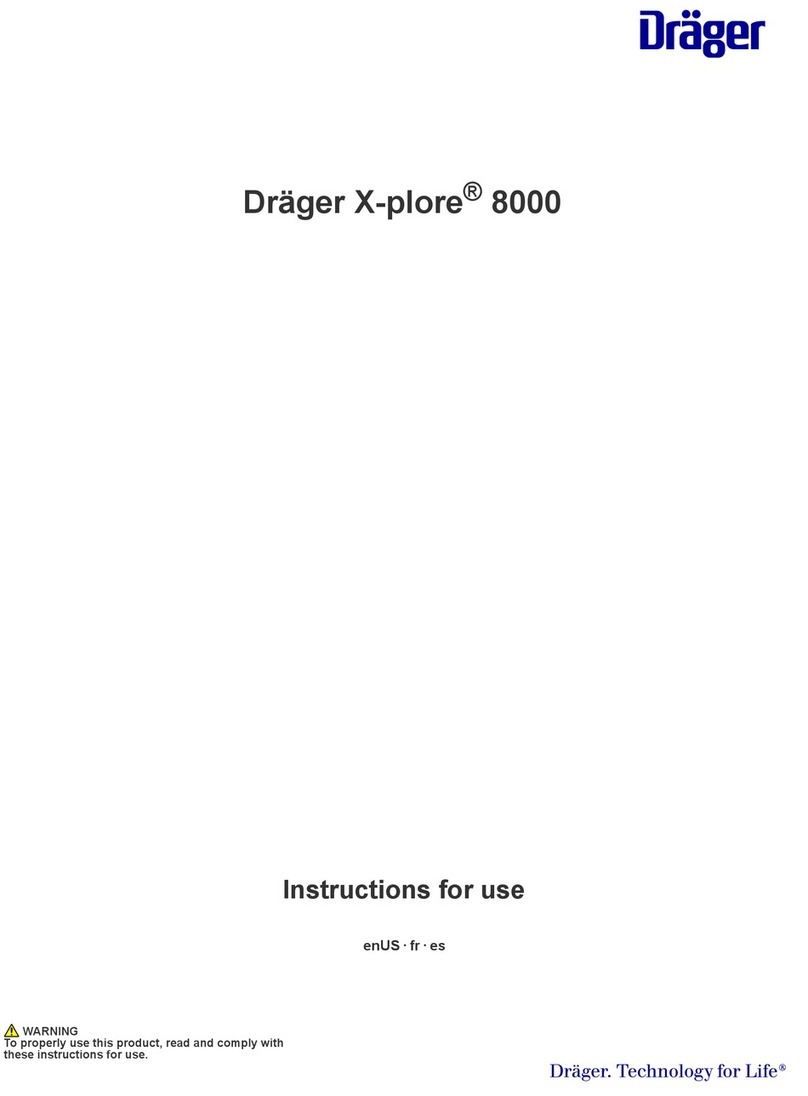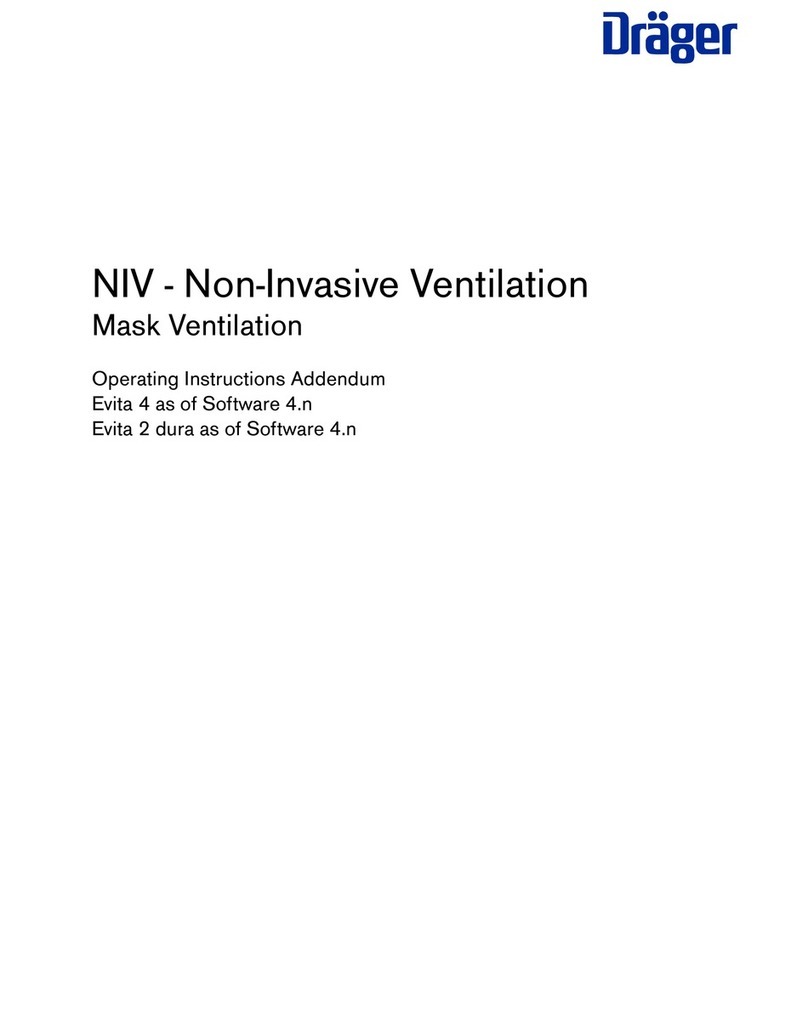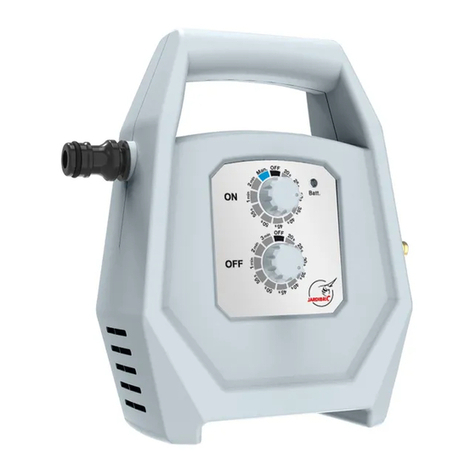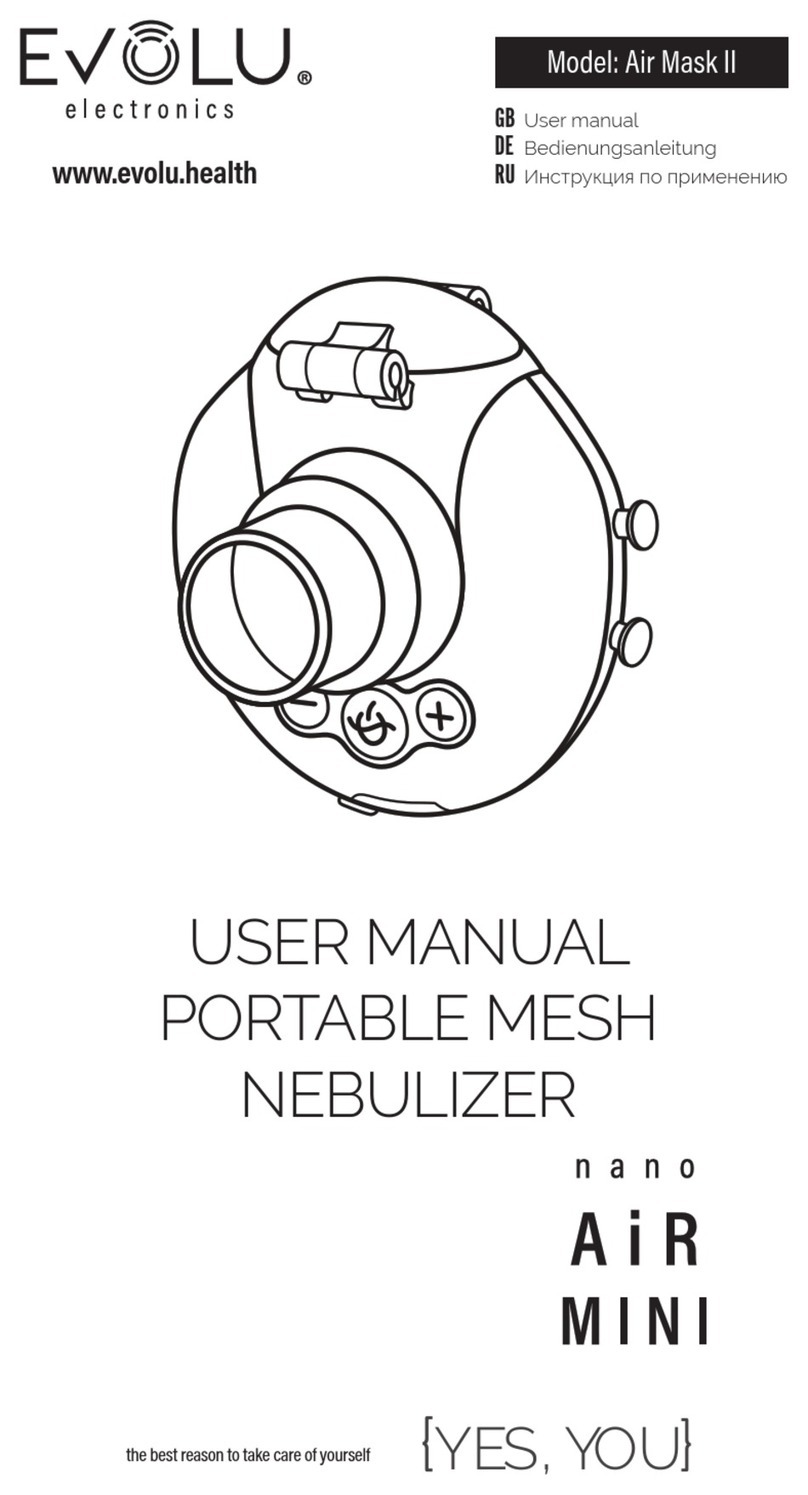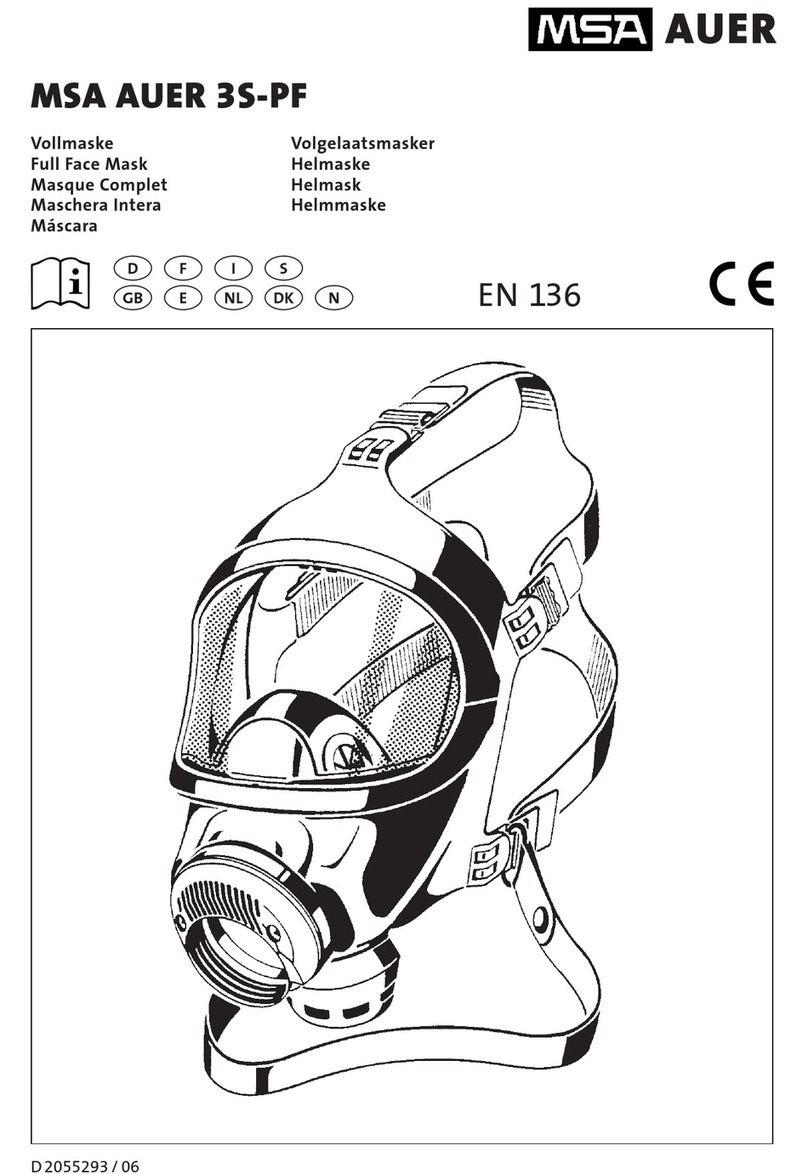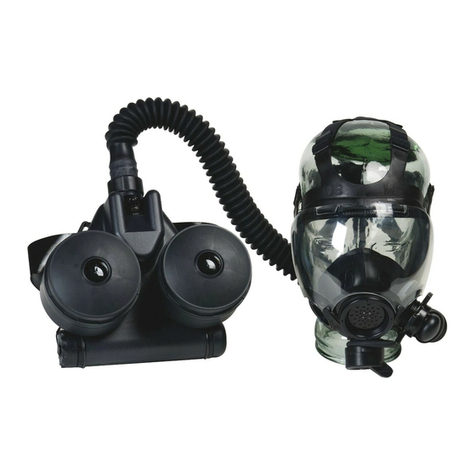
3356233 (A3-D-P) Page 3 of 4
PSS®7000 Series
Self contained breathing apparatus with Sentinel 7000 Instructions for Use
Carrying harness – Thorough cleaning
Do not immerse pneumatic or electronic components in cleaning
solutions or water.
Remove the harness from the carrying system and clean using one of the following
methods:
a. Clean manually in a bath containing recommended cleaning or disinfecting agents.
b. Machine wash (at 86 °F (30 °C)) using a suitable cleaning agent.
Rinse the harness thoroughly with clean water to remove all cleaning and disinfecting
agents.
Dry all components including internal parts.
Storage (Ready for Use)
Fully extend the shoulder straps, waist belt and head harness straps.
Store apparatus in a cool dry environment, free from dust and dirt (do not expose to
direct sunlight).
WhentheSCBAisstoredwiththecylindertted,theapparatusmustbesupportedby
the cylinder and not the backplate.
Remove the batteries if the equipment is not used for long periods (a small amount of
discharge occurs during storage).
Storage preparation
Extend the shoulder straps, waist belt and the straps of the face mask.
For storage, place the face mask in a protective bag (contact Dräger for supply of a
suitable bag).
Route rubber hoses in such a way that the bend radius is not too acute and the hose
is not stretched, compressed or twisted.
Withthesystemswitchedo,asmallamountofbatterypowerisconsumed.Ifthe
system is not to be used for a long period, remove the batteries.
Storage conditions
Store the equipment between 5 °F and 77 °F (-15 °C and +25 °C). Ensure that the
environment is dry, free from dust and dirt, and does not subject the equipment to wear
or damage due to abrasion. Do not store the equipment in direct sunlight.
Fix the breathing apparatus securely to any raised mounting point to prevent it from
falling.
Special instructions
Use of an Independent Air Supply (SAR Airline Connection)
Air quality must conform to the statutory requirements.
Use of an airline connection by a second person (buddy-breather) voids
NIOSH approval.
The time required for the wearer to escape to a safe area must be within the
remaining breathing time of the cylinder, taking into account the remaining
air content in the cylinder and the breathing rate of the wearer.
Independent air supplies must meet the following standards:
Type-1gaseousairasdenedin:CGACommoditySpecicationforAir,G-71(grade
D or higher)
NFPA 1989 Standard on Breathing Air Quality for Fire and Emergency Services
Respiratory Protection
Air supply pressure – 87 psi to 125 psi
Airline hose length – 5 feet to 300 feet (maximum working hose length must not
exceed 12 individual hose lengths)
Airlineowrate–550liters/minute
Approved for use at temperatures above minus 25 degrees Fahrenheit (minus 31.7
degrees Centigrade).
Sentinel 7000 alarms and warning signals will operate as normal.
The user interface display will show cylinder pressure when the cylinder
valve is open.
Turn on the independent air supply.
Connect the independent air supply coupling to the secondary supply hose (refer to
instruction no. 3355853) and breathe normally.
Close the cylinder valve (if the EOST warning signal activates, silence by taking several
short deep breaths or momentarily operating the LDR bypass button (3, Fig 15).
If any air supply problems are encountered, proceed as follows:
Open the cylinder valve to return to breathing from the attached cylinder.
Disconnect the independent air supply coupling.
Leave the hazardous area by the shortest and safest escape route, if necessary.
Cautions and Limitations
D – Air-line respirators can be used only when the respirators are supplied with respirable
air meeting the requirements of CGA G – 7.1, Grade D or higher quality.
E–UseonlythepressurerangesandhoselengthsspeciedintheUser'sInstructions.
I–Containselectricalpartsthatmaycauseanignitioninammableorexplosiveatmospheres.
J – Failure to properly use and maintain this product could result in injury or death.
M–Allapprovedrespiratorsshallbeselected,tted,used,andmaintainedinaccordance
with MSHA, OSHA, and other applicable regulations.
N – Never substitute, modify, add, or omit parts. Use only exact replacement parts in the
congurationasspeciedbythemanufacturer.
O–RefertoUser'sInstructionsand/ormaintenancemanualsforinformationonuseand
maintenance of these respirators.
S–SpecialorcriticalUser'sInstructionsand/orspecicuselimitationsapply.Referto
User'sInstructionsbeforedonning.
CBRN Use
TheDrägerPSS®7000SeriesiscertiedbyNationalInstituteforOccupationalSafetyand
Health (NIOSH), for limited chemical, biological, radiological or nuclear (CBRN) use and by
the Safety Equipment Institute (SEI) to meet the requirements of NFPA 1981. Approvals are
only valid when the apparatus is used with compressed air cylinders approved by NIOSH.
EquipmentcongurationsforCBRNusearedetailedinaCBRNApprovalLabel(referto
instruction no. 3356226).
IfanFPSNFPALDR,Drägerrecommendthataquantitativettest(QNFT)beperformed
onthefacemaskbeforeuseinaCBRNenvironment.Thettestmustbeconducted
strictly in accordance with the requirements outlined in the OSHA Respiratory Protection
Standard 29 CFR, Section 1910.134.
Q – Use in conjunction with personal protective ensembles that provide appropriate levels
of protection against dermal hazards.
R–SomeCBRNagents maynot presentimmediateeectsfromexposure,but can
result in delayed impairment, illness or death.
T – Direct contact with CBRN agents requires proper handling of the SCBA after each
use and between multiple entries during the same use. Decontamination and disposal
procedures must be followed. If contaminated with liquid chemical warfare agents,
dispose of the SCBA after decontamination.
U – The respirator should not be used beyond 6 hours after initial exposure to chemical
warfare agents to avoid possibility of agent permeation.
!
i
i
After Use
Do not remove the SCBA until in a safe area. Do not drop or throw down
the SCBA as damage could occur.
Release and loosen all of the face mask straps.
Lift and remove the face mask.
Fully extend all of the straps of the head harness.
Close the cylinder valve.
Release the waist belt buckle. Lift the shoulder strap ends to release the strap
retainers (Fig 18) and then lift the shoulder strap buckles to loosen the straps.
Press the front button (2, Fig 15) of the LDR to vent system.
Presstheresetbutton(1)toswitchothepositivepressure.
If the LDR has been set to bypass, press and rotate the bypass button (3) to switch
othebypass.
Press and hold the RH and LH buttons of the user interface until the display clears,
then immediately release the buttons. After approximately 180 seconds, all six HUD
LEDswillashtwicetoindicatethattheunithasloggedo.
Carry out a visual inspection of the complete SCBA including any ancillary equipment
used during the operation.
If required, lightly lubricate the LDR O-ring (recommended lubricant is Molykote 111).
PasstheSCBAtotheservicedepartment,withdetailsofanyfaults/damagethat
occurred during use.
Removing the Cylinder
Do not attempt to remove the cylinder with the system pressurised.
Close the cylinder valve and fully vent the system.
Lift the free end of the cylinder strap from the Velcro fastening and lift the strap
against the cam-lock mechanism to release the strap tension. Loosen the strap.
Unscrewthehandwheeloftherst-stageregulatorfromcylindervalve.
Liftandcarefullyslidethecylinderawayfromrst-stageregulatortowardsthetopof
the backplate.
Remove the cylinder from the apparatus.
Inspect and recharge the cylinder (refer to Charging the Cylinder).
Charging the Cylinder
Air quality for compressed air cylinders must conform to the minimum
grade requirements for Type 1 gaseous air as dened in the CGA
Commodity Specication for Air, G-7.1 (Grade D or higher quality)
and where appropriate be in accordance with: NFPA 1989 Standard on
Breathing Air Quality for Emergency Services Respiratory Protection.
Recharge cylinders to the indicated working pressure marked on the
cylinder.
If the moisture content exceeds the recommended levels, ice particles
can form, reducing or blocking the airow.
Cleaning the SCBA
Cleaning agents and disinfectants listed below are not manufactured
by Dräger and have been reviewed only for compatibility when used to
clean or disinfect the subject Dräger product(s). Read and comply with
all instructions for use provided by the manufacturers of such agents
and disinfectants. Dräger expressly disclaims all responsibility for any
damage, personal injury or loss resulting from the use of such agents
or disinfectants.
Do not exceed 86 °F (30 °C) for washing, disinfecting and rinsing
solutions. Do not exceed 140 °F (60 °C) for drying, and remove
components from the drying facility immediately when dry. Drying time
in a heated dryer must not exceed 30 minutes.
Do not immerse pneumatic or electronic components in cleaning
solutions or water.
If water is trapped and then freezes inside the pneumatic system of the
breathing apparatus (such as the lung demand regulator), operation
will be impaired. Prevent any liquid from entering, and thoroughly dry
the breathing apparatus after cleaning to prevent this from occurring.
Refer also to the Instructions for Use for the lung demand regulator, face mask and other
associated equipment.
Manual cleaning of the breathing apparatus (USA)
Cleaning and disinfecting materials:
Cleaning agent – 1008 Green Liquid Hand Dish Wash
Disinfecting agent – 800 Spur-Tex Disinfectant Cleaner-deodorant (concentration: 1.6 %
(2ozpergallon))
Use only clean lint-free cloths
1. Prepare cleaning solution as per manufacturer’s instructions. Clean the breathing
apparatus manually using a cloth moistened with cleaning solution to remove excess
dirt.
2. Prepare disinfecting solution as per manufacturer’s instructions. Apply to all internal
and external surfaces, ensuring that all surfaces remain visibly wet for 15 minutes.
3. Rinse all components thoroughly with clean water to remove all cleaning and disinfecting
agents.
4. Dry all components using a dry cloth, in a heated dryer or in air.
5. Contact service personnel or Dräger if disassembly of pneumatic or electronic
components is required.
Manual cleaning of the breathing apparatus (Canada)
Cleaning and disinfecting materials:
Cleaning agent – mild soap solution
Disinfectingagent–NeutralDisinfectantCleaner(concentration:0.5%(0.5ozper
gallon or 15 ml per 3.785 liters))
Use only clean lint-free cloths
1. Prepare cleaning solution as per manufacturer’s instructions. Clean the breathing apparatus
manually using a cloth moistened with cleaning solution to remove excess dirt.
2. Prepare disinfecting solution as per manufacturer’s instructions. Apply to all internal
and external surfaces, ensuring that all surfaces remain visibly wet for 10 minutes.
3. Rinse all components thoroughly with clean water to remove all cleaning and disinfecting
agents.
4. Dry all components using a dry cloth, in a heated dryer or in air.
5. Contact service personnel or Dräger if disassembly of pneumatic or electronic
components is required.
!
!
!
!
S – Special or Critical Users’ Instructions
Approved for use at temperatures above minus 25 degrees Fahrenheit (minus 31.7
degrees Centigrade).
Whenusedasacombinationsupplied-airrespirator/self-containedbreathingapparatus
(SAR/SCBA),notmorethan20percentoftheairsupplycanbeusedduringentry.
During supplied air use, the cylinder valve must remain closed. If the supplied air fails,
open the cylinder valve and immediately proceed to fresh air.
Suppliedairsourcemustmeetthefollowingcriteria:pressure87–125psi,airowrate
atleast550liters/minute.
Important Note: If it is decided to exit the working area with the airline disconnected
or, in an emergency, if the air supply fails, breathe normally and immediately proceed
as follows:
Open the cylinder valve (counterclockwise) slowly, but fully and breathe normally.
Disconnect the hose of the independent air supply from the male coupling of the airline
hose connection. Breathe normally and immediately leave the hazardous area by the
shortest and safest route.
Safety Warning: The remaining duration begins from the time of opening the
cylinder valve and disconnecting the independent air supply. The time required to
allow the wearer to escape to a safe area must be within the remaining air capacity
(volume) of the cylinder taking into account the breathing rate of the wearer.
RIC UAC Use
Use of the RIC UAC should be by trained and competent personnel only.
TheRICUACllinghoseisarequiredcomponentoftheNFPA1981certication.
OnlyuseallinghosewhichhasbeencertiedtoNFPA1981foruseinimmediately
dangerous to life or health (IDLH) atmospheres.
Do not use the RIC UAC connection for second person (buddy-breather).
Do not use the RIC UAC support pack to transfer air from one compressed air
breathing apparatus to another.
Do not allow oil, grease or other contaminants to contact the RIC UAC connection.
Do not attempt to disassemble or repair the RIC UAC connection.
Caution: The secondary air supply pressure to the RIC UAC must not exceed
maximumratedworkingpressureofthecylinder(s)beinglled.
Caution: If the pressure relief valve of the RIC UAC is activated, the SCBA must be
returned to the nearest Dräger branch or agent.
Caution:Ifaleakisdetectedwhilerellinginacontaminatedoroxygen-decient
gaseousatmosphere,stoprellingandimmediatelyleavethehazardousarea.
Contact Details
Any issues with the equipment, including damage, malfunction, or failure of the
breathing apparatus that may present a hazard to the user should be reported to
Dräger US Customer Service – Phone: 1-800-437-2437.
Contactwiththecerticationorganisationsmaybereachedat:
NIOSH, NPPTL
Phone: 1-412-386-4000
SEI (NFPA)
1307 Dolley Madison Blvd
Suite 3A, McLean
VA 22101
Phone: 1-703-442-5732
Equipment Maintenance Procedures
TasksidentiedinTables2or3asmaintenancetasksaretobecarriedoutbytrained
and competent personnel only (authorised by Dräger). Refer to the maintenance manual
for further information.
Equipment servicing
Service and test the breathing apparatus, including out-of-use apparatus, in accordance
with the Table 2. Record all service details and testing. Refer also to the Instructions for
Use for the lung demand regulator, face mask and other associated equipment.
Additional inspection and testing may be required in the country of use to ensure
compliance with national regulations.

